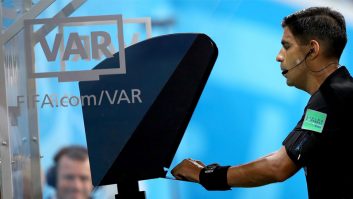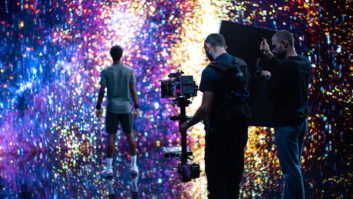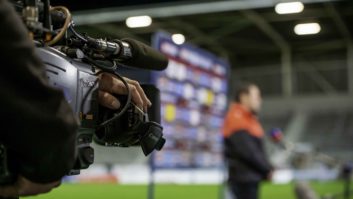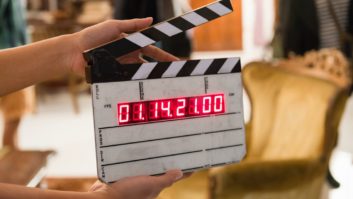Producer-director Richard Boddington is no stranger to Africa, having shot his last two films there. The first, Against the Wild 2: Survive the Serengeti stars Star Trek: Voyager alumna Jeri Ryan and is a sequel to the 2013 film Against the Wild, which was produced in Boddington’s home country of Canada.
The director’s most recent film is Phoenix Wilder and the Great Elephant Adventure. Starring Elizabeth Hurley and Canadian Sam Ashe Arnold, it tells the story about an orphan who takes on a team of poachers with the help of a wild elephant.
“The way international treaty co-productions work,” begins Boddington, “is there’s a Canadian producer and one in the country you’re going to shoot in. The script dictated that we shoot in Africa. It’s my second Canada-South Africa co-production. Prior to shooting, you receive approval from both governments that it’s going to be an international treaty co-production, the two come together and bring everything to the table that the production needs.”

This creates a mechanism for this most international of industries to share some of the risk involved in commercial filmmaking, and offers a route to tax rebates which can be more generous than those available to “service” productions, where there is no requirement that a certain amount of work is done in any particular jurisdiction.
“If a large American shoot goes into Johannesburg,” Boddington explains, “They receive a tax rebate on their spend at a much lower rate than a co-production does – but then, co-productions are going to be a smaller budget to refund.”
Cape Town…looks identical to Los Angeles, so it’s easy to double it for LA.
The more generous refunds available to fully-accredited co-productions returns some 35% of the South African spend. In this situation, key production responsibilities must be shared between the countries involved.
Boddington continues, “There are strict rules about the workload that is going to be done in each country – you need a certain number of department heads.” On Phoenix Wilder, composer Andries Smit and production designer Bobby Cardoso were South Africans, as is producer Grieg Buckle. “He hired the entire crew – securing the South African actors and basically being in charge of the entire movie with his staff.”
The best pilots, at one third the price
“I actually got the idea for Phoenix Wilder – a boy who gets lost in the bush, finds an elephant and they take on the poachers together – when I was in Africa in 2014 to scout Against the Wild 2,” Boddinton recalls. “South Africa is the only first-world, fully operational nation in Africa. There’s two unstable border states, Zimbabwe and Mozambique, where it would be unshootable. But South Africa still has its challenges – something as simple as the traffic lights not working. It may not seem like a big thing, but when you’re trying to move cast and crew across the city, those lights become important.”
The payoff, Boddington notes, involved some of filmmaking’s bigger-ticket toys: “You can get the best helicopters loaded with the best camera gear and the best pilots in the world, and you’re going to get it for literally a third the price, because of the exchange rate and the fact that things don’t cost as much there.”

One other bonus is the lack of unionisation: “We can make a film without having to sign any union contracts or having to put up a bond. But that doesn’t mean that there’s any crew abuse, because South Africa has advanced labour laws.
“Tax withholdings,” Boddington says, “are done at the source, you’re expected to have proper insurance for your crew, for health and safety, pensions, and all that sort of stuff. You’re going into lunch a certain number of hours after call, there’s going to be overtime after 12 hours, they’re going to be paid per diem. That stuff that North American crews are used to getting also exists there, there just isn’t a union boss visiting the set.”
While Boddington brought in director of photography Stephen Whitehead, a regular collaborator of his, the production filled the roles of camera assistant and assistant director locally.
Going where the elephants are
With wildlife action critical to the plot, Boddington sought out a base of operation near an elephant reserve in Bela Bela, about 100 miles north of Johannesburg, which the production used exclusively for two weeks.
“We’re shooting a pro-elephant, anti-poaching movie, there’s no way I would have allowed us to put an elephant on a truck and move it to a location. We brought the crew to them. We also brought the sets and set pieces to them, so we could shoot the pieces that involved the elephants, and then we reconstructed them in Johannesburg. When you look at the final edit you’ll think that it was all in one location.”
Boddington remembers that the elephants were motivated by only two things: “Voice commands and oranges – there are no wires or prods or anything like that. Because I knew that, there’s a bit of movie logic when the boy stumbles into the poacher camp. As he hears their jeeps approaching he goes through their supplies and hey, there’s a bunch of oranges so he can give them to the elephant!

“The elephants are treated like royalty on the reserve they live on. There’s a very advanced animal welfare department that governs the use of animals in film, and the elephants had more restricted working hours than our child actor did. We had two elephants that could double for each other.”
Given the risks of working with animals, Boddington built animatronic elephant parts.
“They were made at a creature effects shop in Cape Town. You could manipulate them very well with the cable system and pulleys. And the skill level is equal to that you’ll find in Canada and the UK. They don’t need any help. But no animatronic trunk is going to move like a real one, and no CG trunk, even if ILM builds it, is going to move like a real one. The guys in this park could get the elephants to do anything, and they did get them to do anything in our script.”
In the end, the entire film was photographed with live elephants, entirely in-camera.
Doubling for L.A.
“I’ve never shot a film in Panavision before,” Boddington reflects, adding that the Johannesburg production company’s enthusiasm was influential in the decision. “The package of Alexa camera and Primo lenses was identical to what you’d find on a hundred-million dollar film. All their employees are South Africans, they’ve got a beautiful facility in Johannesburg. It looks like it was smack out of LA. We were going to be three hours out of Johannesburg, out of replacement range. They said ‘normally we don’t do this, but take an extra 10K in case that one blows.’ They bent over to do whatever they could to help us.”
With Phoenix Wilder in the latter stages of post production, Boddington’s next project, Ocean Odyssey, is also to be shot in South Africa.
No CG trunk, even if ILM builds it, is going to move like a real one
“It’s about a family who goes on a Pacific sailing trip together, they sell their house and buy a sailboat and go on a trip. That’s going to be based in Cape Town. There’s water tanks at Cape Town studios. They have inside water tanks, outdoor water tanks. Cape Town is obviously on the coast. It looks identical to Los Angeles so it’s easy to double it for LA.”
Ultimately, the choice of locality is influenced by both finance and production design, but one line item – the elephants’ feed during the two weeks the production spent at Bela Bela – sticks in Boddington’s mind.
“I tell people the elephant ate the budget, and he literally sat there and ate the budget. Oranges are the magic.”







